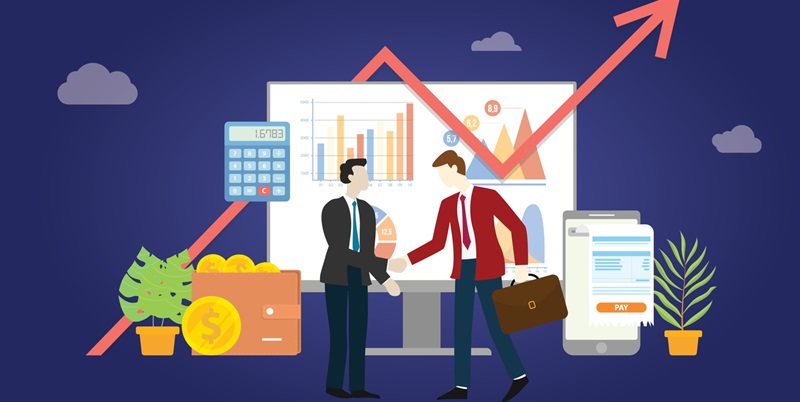The business world is undergoing a significant transformation, redefining the way sales strategies are approached. The clear-cut distinction between Business-to-Business (B2B) and Business-to-Consumer (B2C) is becoming more fluid as companies recognize the need for personalized market engagement strategies. The earlier focus on categorizing customers as either businesses or individual consumers is now evolving. Modern startups must navigate this complex environment by implementing flexible sales tactics that directly address the specific needs of each customer group. Success hinges on their ability to move beyond old classifications and to finely tune their approach, aligning it with the unique dynamics of their target segments. This nuanced path holds the key to effective market penetration for burgeoning enterprises.
Rethinking Business Categorization
The classic model of categorizing businesses into B2B or B2C markets is beginning to show its limitations, prompting startups to delve more profoundly into crafting distinct sales and marketing strategies. This nuanced look at sales tactics is not just about identifying the target audience but also understanding the critical elements that make one’s approach effective. After all, selling to a business involves layers of decision-making and usually hinges on building enduring relationships, while selling to a consumer tends to focus on individual needs and immediate fulfillment. Understanding the nuances of each market helps in formulating a sales approach that is both insightful and impactful.
For the B2B segment, the need arises to comprehend complex sales cycles and the importance of nurturing leads over time. It’s about fostering long-term partnerships based on trust and the capacity to demonstrate in-depth value. Meanwhile, in the B2C realm, the interaction is more dynamic and often more transactional, necessitating a sales approach that emphasizes speed, clarity, and the ability to compellingly connect with individual desires.
Developing a Relationship-Driven Approach in B2B Sales
In the world of B2B, relationships reign supreme. Startups looking to break ground must understand the high stakes of B2B sales strategies revolving around trust and value. Long-term partnerships are built on a foundation of reliability and mutual benefit. Strategies such as lead nurturing, which allow for the progressive cultivation of potential clients, and in-depth communication tactics tailored to business sensibilities can help establish a fledgling business as a trustworthy partner.
The cornerstone of an effective B2B relationship is the recognition of the client’s business pain points and the provision of solutions that align with them. This necessitates a sales approach that is not only consultative but adapts to the evolving needs of the business marketplace. Fostering these strategic partnerships is likely to yield significant returns over time as compared to the pursuit of immediate sales victories.
The Dynamics of B2C Sales Strategies
For consumer-facing startups, the imperative is to harness the power of quick, efficient transactions buttressed by an exceptional customer experience. The strategies employed in the B2C domain hinge on understanding consumer behavior and mirroring back that understanding through direct and compelling communication. The end game is not just making a sale but fostering brand loyalty and repeat customers through positive experiences.
To resonate with individual consumers, startups must articulate clear and attractive value propositions. Every touchpoint, from product design and marketing to customer service, should be engineered to deliver convenience, quality, and a standout experience. In the B2C marketplace, where choices abound, the businesses that manage to connect emotionally and practically with their consumers are the ones that stay relevant and prosper.
Smarter Sales Tactics for Startups
Smart startups understand the need to adapt their sales tactics to meet the varying needs of their customers. Personalizing the sales experience is crucial, whether their clientele comprises businesses or individual consumers. By tailoring the approach to match customer preferences, startups not only improve the customer journey but also increase sales and foster loyalty.
Observing the practices of successful companies, it’s clear that customization in sales can give startups an edge over the competition. A blend of traditional and new, innovative sales approaches helps them stand out in a crowded market.
For new businesses aiming to make their mark, adjusting sales strategies to the individual customer can mean the difference between blending in and standing out. This customer-centric approach does not just make good business sense for engaging users; it is a key component in driving success and growth in a competitive business landscape.
Beyond One-Size-Fits-All: A Call for Nuance
As markets saturate and consumer preferences shift, the rigid B2B and B2C frameworks are proving to be insufficient. Startups must adopt a more agile approach, tailoring sales strategies to fit the specific needs and experiences of their clients. This evolution is critical: beyond changing labels, it’s about a deeper rethinking of customer engagement.
Startups should avoid generic models, instead identifying the distinct needs of each client interaction to craft bespoke sales approaches. This shift does not just tweak the surface but questions the core of traditional sales methods. Businesses stand to gain from abandoning one-size-fits-all tactics in favor of a strategy that prioritizes customer nuances and goals.
Embracing this nuanced perspective can lead to innovative and flexible business practices, which are crucial in the dynamic landscape that startups inhabit. This strategic refinement is not merely optional; it’s essential for those looking to thrive amidst evolving market conditions.

